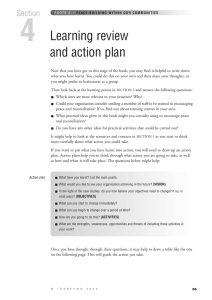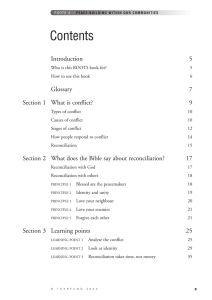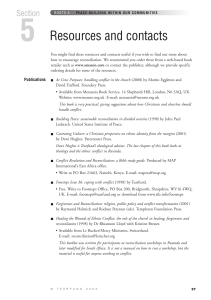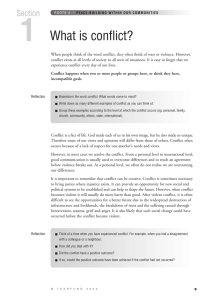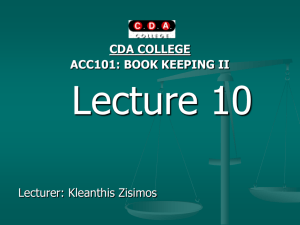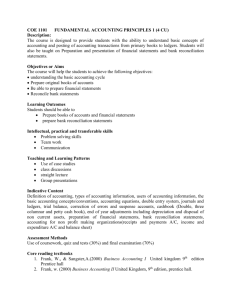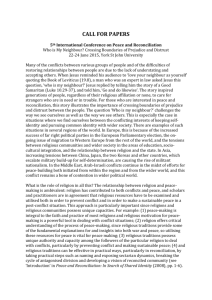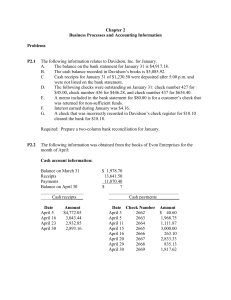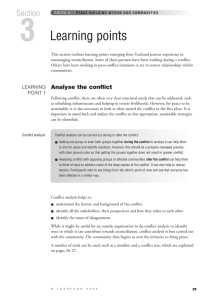Introduction
advertisement
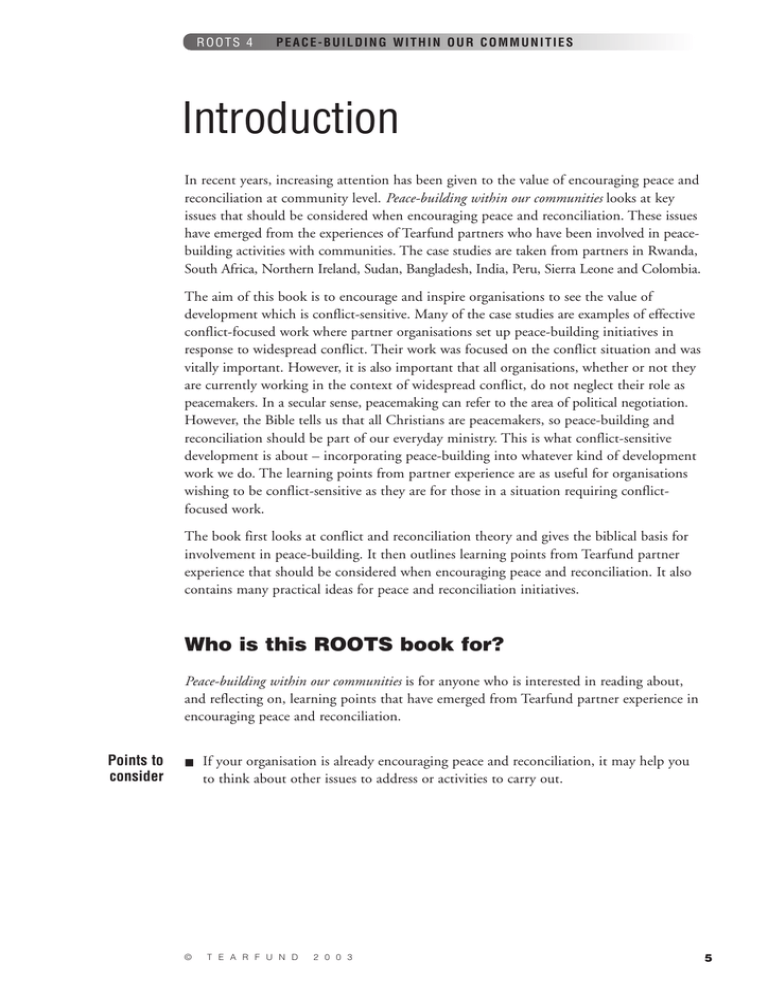
ROOTS 4 PEACE-BUILDING WITHIN OUR COMMUNITIES Introduction In recent years, increasing attention has been given to the value of encouraging peace and reconciliation at community level. Peace-building within our communities looks at key issues that should be considered when encouraging peace and reconciliation. These issues have emerged from the experiences of Tearfund partners who have been involved in peacebuilding activities with communities. The case studies are taken from partners in Rwanda, South Africa, Northern Ireland, Sudan, Bangladesh, India, Peru, Sierra Leone and Colombia. The aim of this book is to encourage and inspire organisations to see the value of development which is conflict-sensitive. Many of the case studies are examples of effective conflict-focused work where partner organisations set up peace-building initiatives in response to widespread conflict. Their work was focused on the conflict situation and was vitally important. However, it is also important that all organisations, whether or not they are currently working in the context of widespread conflict, do not neglect their role as peacemakers. In a secular sense, peacemaking can refer to the area of political negotiation. However, the Bible tells us that all Christians are peacemakers, so peace-building and reconciliation should be part of our everyday ministry. This is what conflict-sensitive development is about – incorporating peace-building into whatever kind of development work we do. The learning points from partner experience are as useful for organisations wishing to be conflict-sensitive as they are for those in a situation requiring conflictfocused work. The book first looks at conflict and reconciliation theory and gives the biblical basis for involvement in peace-building. It then outlines learning points from Tearfund partner experience that should be considered when encouraging peace and reconciliation. It also contains many practical ideas for peace and reconciliation initiatives. Who is this ROOTS book for? Peace-building within our communities is for anyone who is interested in reading about, and reflecting on, learning points that have emerged from Tearfund partner experience in encouraging peace and reconciliation. Points to consider ■ © If your organisation is already encouraging peace and reconciliation, it may help you to think about other issues to address or activities to carry out. T E A R F U N D 2 0 0 3 5 ROOTS 4 PEACE-BUILDING WITHIN OUR COMMUNITIES ■ If your organisation has seen opportunities to encourage peace and reconciliation, but is unsure about how to get involved, this book will help you start to think about what issues you may need to address and the options you could consider. ■ If your organisation does not currently see the need to incorporate peace and reconciliation into your work, then this book will help you think about why conflict-sensitive development is important. You are likely to face conflict situations in the future. These may be violent, or they may be small-scale tensions over a community project. The learning points in this book apply as much to these types of tensions as they do to larger conflict situations. How to use this book You could simply read Peace-building within our communities without working through the reflection questions. However, we believe that working through it with others and taking time to reflect on the issues will increase its usefulness. It has been divided into short sections so that you can work through it during a number of sessions: 6 ■ SECTION 1 and SECTION 2 look at conflict and reconciliation theory. We suggest that you read these sections individually and then work through them with other people to make sure you understand the theory. In SECTION 2 we have included group Bible studies to help you to think through the biblical principles. You might like to use these Bible studies in awareness-raising seminars to encourage reconciliation. ■ In SECTION 3 there are case studies from Tearfund partners to help you see how the learning points work in practice. We hope that these case studies will provide ideas for initiatives that you might like to carry out. After the case studies, you will find reflection questions to help you think about how each learning point relates to your local situation. ■ It is important to spend time on SECTION 4. The learning review helps you consider whether your organisation could become involved in encouraging reconciliation. The action plan helps you think about how you would put it into practice. ■ In SECTION 5 we list some publications and websites that you might find useful if you are interested in finding out more about peace-building and reconciliation. T E A R F U N D R O O T S R E S O U R C E S
